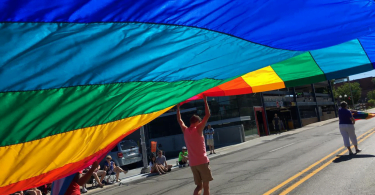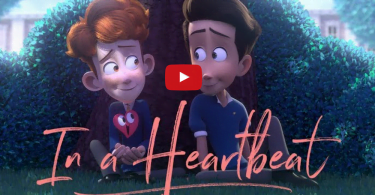With Theresa May and Andrea Leadsom the final two candidates in the Conservative leadership contest, the UK will soon be getting its second female Prime Minister. But when could we see 10 Downing Street occupied by an LGBTQ+ identifying politician?
35 MPs identify as lesbian, gay or bisexual, making up around 5% of the House of Commons. Westminster still has no transgender representatives, after all trans candidates in 2015 failed to win their seats, including Labour’s Emily Brothers who became the first transgender candidate to stand for a major UK party. Many say this proportion of LGB politicians makes parliament almost representative of the wider population, especially when compared with the lack of proportional representation for those from gender or racial minorities, or with disabilities.
Great to see #LGBT diversity in UK politics: https://t.co/NOmcLdOYO0
— Ian Duddy (@ian_duddy) February 22, 2016
Perhaps most likely to end up leader in the near future is Labour’s Angela Eagle, who announced on Saturday that she will challenge Jeremy Corbyn for leadership of the party. She has support from the required 50 MPS needed to challenge Corbyn, though her own constituency members have backed the current leader instead. In 1997 Eagle was the first female MP to come out whilst in office, whilst in 2008 she became the first female MP to enter into a civil partnership. If she was successful Eagle would become Leader of the Opposition, almost within touching distance of Downing Street, and continue her string of lesbian “firsts” within Westminster. But Eagle wasn’t the only LGBTQ+ member of Corbyn’s cabinet. Cat Smith joined her, first becoming Shadow Minister for Women and now Shadow Minister for Voter Engagement and Youth Affairs. She may be a young politician, elected in 2015, but as a loyal Corbyn supporter Smith could do well if he stays as leader.
Rwendland via Wikimedia Commons
But if you’re looking for LGBTQ+ politicians Scotland really is the place to set your gaze upon. Four of Scotland’s political parties have queer leaders; Kezia Dugdale for Scottish Labour, the Greens’ Patrick Harvie, Conservative leader Ruth Davidson and David Coburn of UKIP. Ruth Davidson has even been tipped as a potential leader of the wider Conservative party – and thus a potential candidate for PM – though she has said she does not want the job, despite Conservative Home finding her more popular than any member of the cabinet in May this year. Though the SNP’s leader isn’t LGBTQ+, a large number of its elected representatives are, including seven Westminster MPs. In fact, the SNP’s parliamentary party is now 12.5% queer, the highest proportion of any political party in the world. Amongst this number is Mhairi Black, the 21-year old MP whose maiden speech in the House of Commons went viral. As a young woman she has a long career ahead and it’s not hard to imagine that it could bring her into the higher echelons of political power. Though with another Scottish referendum looming perhaps Black will be the first queer Prime Minister of Scotland, not the UK.
[video:https://www.youtube.com/watch?v=lZAmhB55_-k]Mhairi Black’s maiden speech in the House of Commons
Whilst we’re certainly going to be getting another female Prime Minister before a queer one, Westminster is no longer a place cut off from the LGB community – though for potential transgender MPs there’s clearly still a huge problem with their lack of representation in government. It’s nice to note too that it is LGBTQ+ women who seem to be taking the lead nowadays amongst queer politicians. As we see daily reminders that homophobia is still very present in our society, it’s heartening to see that, in parliament at least, the LGBTQ+ community seems to be making progress.








